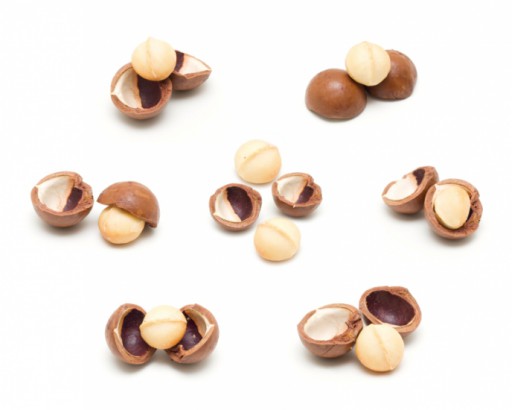The virtues of macadamia nuts and oil
mis à jour le 7 October 2015 à 00:02
Macadamia is best known as crunchy nibbles buried in ice cream. But did you know it is also a dry fruit with highly beneficial properties? Read on…
The aborigines, who call it "kindal kindal", had been munching on macadamia for thousands of years before a German botanist got interested in it somewhere during the mid-nineteenth century. The name “macadamia” was given in honour of the Scottish academic John Macadam, who had helped to identify it. The nuts, which take several months to mature, are gathered on land once they fall from trees.
Their hard shell is surrounded by a green envelope that opens slightly upon maturity. The tree, which carries about 50 kg of fruit, may exceed 15 m in height. Naturally found in deep forests, macadamia trees have since acclimatised to the tropics. “We import organic oil from Kenya. The nuts that are rejected because they are too small for the food industry are collected by farmers who sort and resell them for oil. This gives them a financial supplement. They are then processed locally,” says Nelly Legrand, an expert in plant extracts for Aroma-Zone, a company that offers ingredients for cosmetic products.
The nuts:
The macadamia nut is one of the dry fruits with the highest fat content (78%) – but don’t worry, it is all good, as macadamias mostly contain mono unsaturated and anti-cholesterol fatty acids. A recent clinical study by the University of Pennsylvania in the U.S. has demonstrated its effectiveness in lowering moderate hyper-cholesterolemia when consumed regularly for a month.
Extremely high in calories, (more than 700 calories per 100g!), macadamia is able to satiate hunger quickly. Its fresh, buttery taste reveals itself when we bite into it, or when we crush it to sprinkle over a salad or ice cream. For maximum freshness, look for brands with foil packaging, and keep refrigerated after opening.
Oil:
Obtained from the pressing of the nuts, macadamia oil, extremely rich in mono unsaturated fatty acids (as much as, if not more than, olive oil), therefore acts as cardiovascular protector. Significant advantage – it is fairly resistant to going rancid, as long as you do not leave the bottle out in the heat.
Its optimal cooking temperature is at about 200°C, which means that at higher temperatures, it deteriorates in quality. It thus supports cooking, though preferably not suitable for deep-frying. It can also be used as a substitute for olive oil in cake recipes. Its raw, fine, sweet flavour, similar to that of hazelnut oil, is able to round down the bitterness of some salads.
You can even use it in the bathroom! Quickly absorbed by the skin, it has a particularly dry feel. Rich in palmitoleic acid, similar to that of the fatty acids in our skin, it generally goes very well with all skin types. Very nourishing and regenerating, "it leaves no clogging film, and as such also does not cause acne," said Nelly Legrand.
It can also be massaged into the skin to prevent stretch marks, for invigorating the skin, and protecting the hair and hands. In addition, it also has a reputation for improving micro-circulation.



